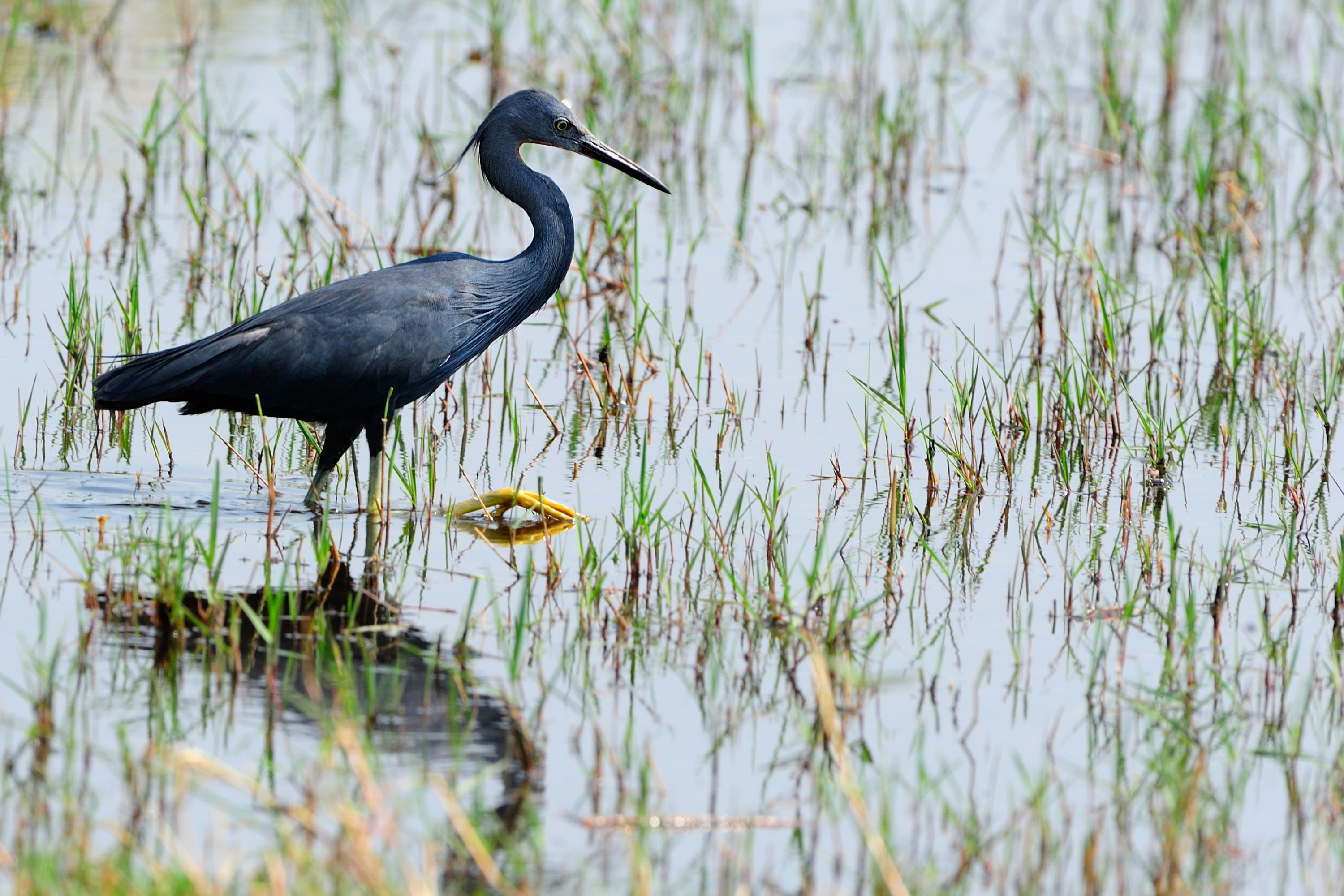
The Slaty Egret: The Rare Gem of African Wetlands
Introduction to the Slaty Egret
The Slaty Egret, Egretta vinaceigula, is a rare and enigmatic bird species belonging to the heron family, Ardeidae. Native to the southern parts of Africa, this egret is distinguished by its unique slate-gray plumage and its specialized habitat preferences.
Physical Description
The Slaty Egret stands at about 60 cm tall, making it a medium-sized member of the egret family. Its plumage is primarily a dark slate-gray color, with a striking vinous (wine-red) hue on the throat and upper breast. The legs are black, and the bill is a contrasting bright yellow, creating a distinctive appearance.
Habitat and Distribution
This egret is primarily found in the Okavango Delta of Botswana, with some populations in neighboring countries like Namibia, Zimbabwe, and Zambia. Its preferred habitats are shallow, seasonally flooded wetlands, particularly areas with floating vegetation and papyrus swamps.
Behavior and Lifestyle
The Slaty Egret is a solitary bird, typically seen alone or in small groups. It is known for its secretive nature, often remaining hidden among reeds and aquatic vegetation. This egret is most active at dawn and dusk, feeding in the shallow waters of its habitat.
Feeding Habits
Its diet consists mainly of small fish, amphibians, and aquatic invertebrates. The Slaty Egret employs a patient hunting strategy, often standing still or walking slowly to ambush prey, using its sharp bill to make quick catches.
Breeding and Nesting Habits
The breeding habits of the Slaty Egret are not well-documented due to its elusive nature. However, it is known to nest in reedbeds or small trees, often close to water. The nests are typically constructed from reeds and other aquatic plants.
Egg Laying and Incubation
Details about its egg-laying and incubation periods are scarce. However, like many herons and egrets, it is presumed that both parents share the responsibilities of incubating the eggs and caring for the chicks.
Chick Rearing and Parental Care
The chicks of the Slaty Egret, like those of other egret species, are likely to be altricial and dependent on their parents for food and protection. The parents would feed the chicks regurgitated food until they are ready to fledge.
Vocalizations and Communication
The Slaty Egret is not known for being particularly vocal. However, during the breeding season, it may produce a range of soft calls and croaks for communication, especially in the context of mating and territorial defense.
Conservation Status
The Slaty Egret is classified as Vulnerable by the IUCN. Its limited distribution and specialized habitat requirements make it particularly susceptible to habitat loss and degradation, especially due to changes in water management and land use in its habitat range.
Similar Species and Taxonomy
Belonging to the order Pelecaniformes, the Slaty Egret is closely related to other members of the genus Egretta, such as the Little Egret and the Snowy Egret. However, its unique coloration and habitat preference set it apart from its relatives.
The Slaty Egret in Utah
The Slaty Egret is not found in Utah or anywhere in North America, as its range is restricted to specific regions in southern Africa. In Utah, bird enthusiasts can observe other heron and egret species in local wetlands.
Conclusion
The Slaty Egret, Egretta vinaceigula, is a distinctive and rare bird, embodying the unique beauty and ecological significance of Africa's wetland ecosystems. Its vulnerability underscores the importance of wetland conservation efforts. Protecting the Slaty Egret and its habitat is not only vital for this species but also for the broader ecological health of the regions it inhabits.